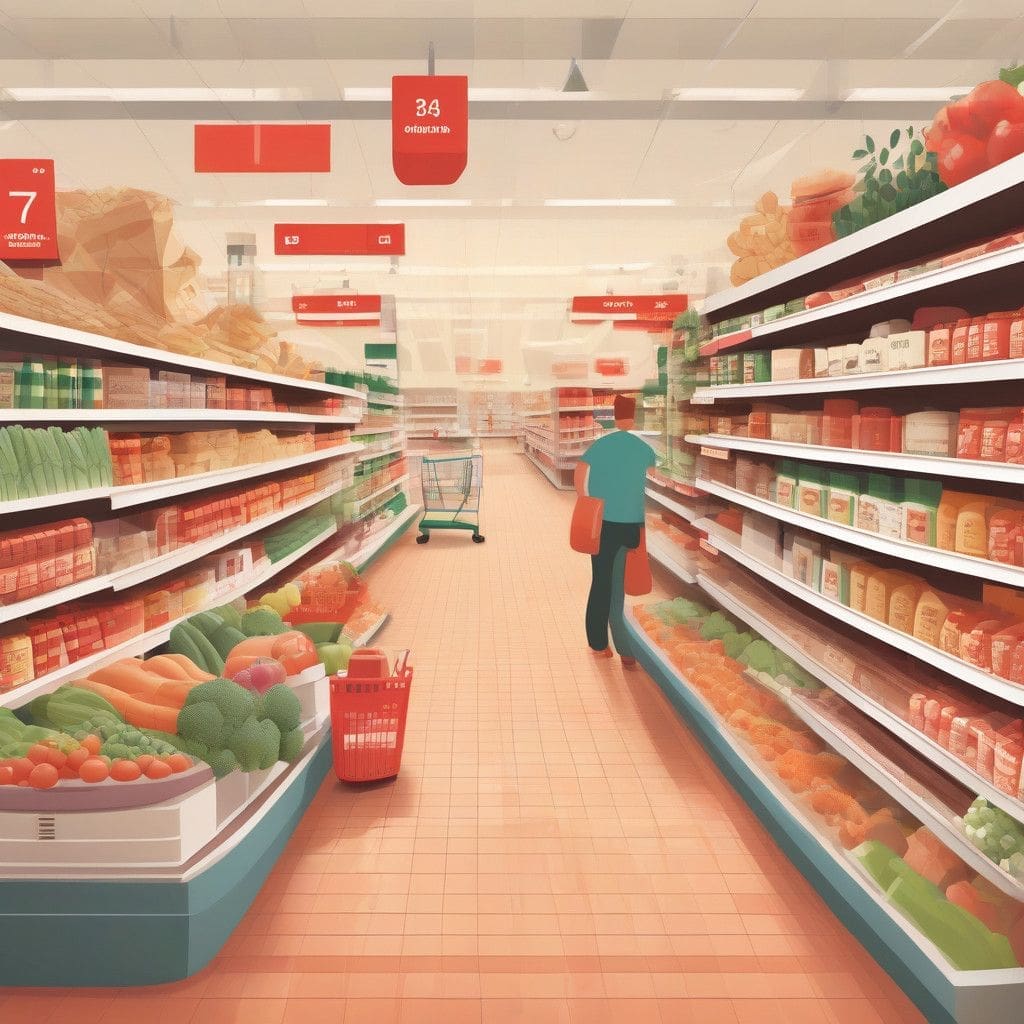The latest Consumer Price Index (CPI) data from the U.S. Bureau of Labor Statistics (BLS) reveals a familiar trend in grocery inflation. For those keeping a close eye on food prices, the situation may seem repetitive, as inflation trends are stabilizing after a tumultuous peak over recent years. Key insights into grocery shopping and pricing are vital for both consumers and retailers in understanding spending power and market dynamics.
In October 2024, the overall CPI registered a modest increase of 0.2% on a seasonally adjusted basis, maintaining the same pace observed for the prior three months. Simultaneously, the food index experienced a similar uptick with food at home rising by 0.1%. While this steady trajectory offers some respite, it is crucial to recognize that the overall CPI has risen 2.6% when adjusted for seasonal fluctuations and that grocery inflation saw a yearly increase of 1.1%.
A deeper look into the grocery categories reveals varied price movements across different sections. According to the BLS, five of the six major grocery indexes reflected upward pricing pressures in October. For instance, both cereals and bakery products along with dairy and related products saw increases of 1%. Price growth also touched fruits and vegetables (+0.4%), non-alcoholic beverages (+0.4%), and other food items at home (+0.1%).
Interestingly, not all categories faced hikes. The index for meats, poultry, fish, and eggs lowered by 1.2%. Egg prices, which had previously surged due to production challenges, saw a significant drop of 6.4% last month—a notable shift, especially since eggs had been among the most volatile price sectors earlier in the year. This fluctuation illustrates how specific market factors can drastically alter consumer prices and behaviors in certain food segments.
To put this CPI data in perspective, Andy Harig, Vice President of Tax, Trade, Sustainability, and Policy Development at FMI – The Food Industry Association, commented on the numbers: “Today’s CPI numbers illustrate that while reducing overall inflation remains a continual battle, food price inflation is showing signs of stabilization. The slight monthly rise of 0.1% in food-at-home prices and the annual annual rate dropping to 1.1% indicate some relief for consumers.”
As Thanksgiving approaches, there are positive developments for consumers seeking affordability during the holiday season. Recent data from the USDA and BLS suggests that traditional Thanksgiving meal items will see decreased costs compared to the previous year. For instance, turkey prices are projected to be down by as much as 11%. Likewise, ham prices are anticipated to drop by 2.5%, while common staples such as potatoes are expected to be 3.5% cheaper. Even seasonal favorites like apples (-13%), fresh cranberries (-5%), and frozen pies (-0.7%) are forecasted to be more budget-friendly this year.
These insights not only benefit consumers but also provide retailers with critical intelligence on pricing strategies and consumer behaviors during peak shopping periods. By understanding the culinary trends and during holidays, grocery businesses can more effectively implement promotions, loyalty programs, and targeted discounts to enhance customer satisfaction and drive sales.
Furthermore, enhancing consumer engagement during key shopping moments through tech-driven solutions like digital coupons or fuel points can bolster sales. As evident from the data, grocery shoppers are increasingly finding value in promotions and loyalty programs, which can also help mitigate the effects of inflation in their shopping experiences.
The road ahead presents both challenges and opportunities in the grocery sector. Consumer awareness and spending habits will continue to evolve, shaped significantly by fluctuating inflation rates, economic conditions, and the changing dynamics of food production. For both consumers and businesses, staying informed and adapting to these changes will be essential in navigating the grocery landscape effectively.
In conclusion, keeping a finger on the pulse of grocery inflation is crucial for consumers aiming to spend wisely and for retailers seeking to connect more effectively with their shoppers. Knowledge of price trends can guide purchasing decisions and marketing strategies in an industry that thrives on responsiveness and adaptability.
